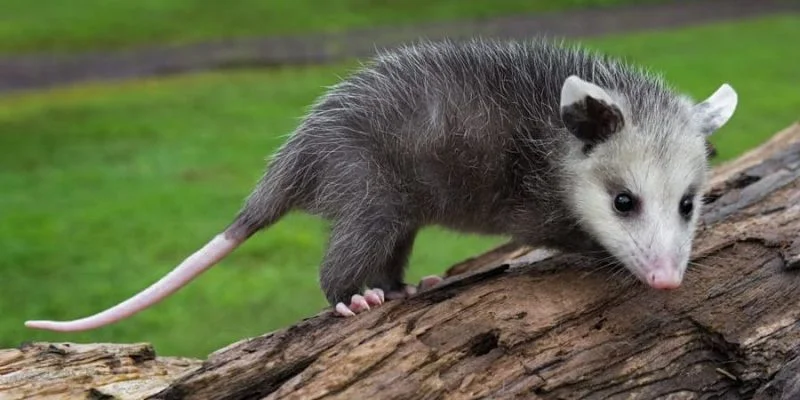Introduction to Tñacuache
If you’re on the hunt for a vibrant and delightful addition to your fruit collection, look no further than the tñacuache. This colorful gem is not just a feast for the eyes; it offers a range of flavors that can elevate any dish. Whether you’re an avid gardener or simply someone who loves exploring new tastes, this guide will walk you through everything you need to know about growing and enjoying tñacuache. Get ready to dive into its rich history, nutritional perks, and creative ways to savor its unique flavor!
History and Origin of Tñacuache
The Tñacuache, often referred to as the opossum fruit, has a fascinating history intertwined with various cultures. Indigenous peoples of Central America cherished it long before it gained worldwide attention.
This vibrant fruit is believed to have originated in tropical regions and adapted well to local climates. Its name derives from the Nahuatl word for opossum, reflecting its unique connection to nature.
Throughout the years, Tñacuache made its way into traditional medicine and culinary practices. Local communities utilized both its flesh and seeds for nutrition and health benefits.
As globalization progressed, interest in this exotic fruit began spreading beyond borders. Today, it’s celebrated not only for its flavor but also for its rich cultural heritage that continues to thrive in modern gardening and cooking trends.
Nutritional Benefits of Tñacuache
Tñacuache is not just a colorful delight; it’s also packed with nutritional benefits. This vibrant fruit is rich in antioxidants, which help combat oxidative stress and promote overall health.
Loaded with vitamins A and C, Tñacuache supports immune function and skin health. These nutrients are essential for maintaining strong eyesight and healthy skin.
Additionally, the fiber content in Tñacuache aids digestion. A diet high in fiber can contribute to better gut health while keeping you feeling full longer.
The natural sugars found in this fruit provide a quick energy boost without causing spikes in blood sugar levels. Enjoying Tñacuache can satisfy sweet cravings while nourishing your body simultaneously.
Incorporating this unique fruit into your meals adds color, flavor, and numerous health advantages that make it a fantastic choice for anyone looking to enhance their diet.
How to Grow Tñacuachein Your Own Garden
Growing Tñacuache in your garden can be a rewarding experience. Start by selecting a sunny spot with well-drained soil. These plants thrive in warm climates, so aim for temperatures above 70°F.
Prepare the soil by mixing in organic compost to enhance fertility. Plant seeds or young seedlings about two feet apart once the frost has passed. Water regularly but avoid over-saturation as this can lead to root rot.
Support your Tñacuache plants with stakes if they begin to grow tall and heavy with fruit. Fertilize every four weeks during the growing season for optimal yield.
Be patient; it may take several months before you see fruit developing. Keep an eye out for pests, like aphids, which can affect growth and health. With care and attention, you’ll soon enjoy vibrant Tnacuache fruits fresh from your own garden!
Different Ways to Enjoy Tñacuache
Tñacuache is a versatile fruit that can elevate your culinary adventures. One delicious way to enjoy it is by slicing it fresh and tossing it in salads. Its vibrant color adds a pop to any dish.
For those with a sweet tooth, consider making Tnacuache smoothies. Blend the fruit with yogurt or coconut milk for a refreshing treat full of flavor.
Baking enthusiasts can incorporate Tnacuache into muffins or bread. The unique taste brings an exciting twist to traditional recipes.
If you’re looking for something savory, try grilling Tnacuache slices and serving them alongside meat dishes. The smoky flavor enhances its natural sweetness.
Don’t overlook using Tnacuache as a topping for desserts like ice cream or pancakes. It’s sure to impress anyone who takes a bite!
Fun Facts about Tñacuache
Tñacuache, often referred to as the “fruit of joy,” has some fascinating characteristics that make it stand out.
First off, its vibrant colors range from bright yellow to deep purple. This striking hue not only makes it visually appealing but also signals its ripeness and flavor.
Did you know that Tñacuache is a succulent? Its juicy flesh retains moisture, making it an excellent choice for hydration on hot days.
Additionally, this fruit has garnered attention in various cultures for its medicinal properties. Traditional remedies tout its benefits for digestion and skin health.
In folklore, Tñacuache symbolizes prosperity and good fortune. Many believe having one in your home can attract positive energy.
It’s worth noting that Tñacuache trees are quite resilient. They thrive in diverse climates, which contributes to their popularity among backyard gardeners eager to add something unique.
Conclusion
Tñacuache is more than just a fruit; it’s an experience waiting to be embraced. Its vibrant colors and unique flavor profile make it a delightful addition to any garden.
Growing this remarkable fruit can provide not only nourishment but also joy. Engaging with nature through gardening fosters a deep connection to the earth and its wonders.
Enjoying Tñacuache unlocks culinary creativity. From refreshing smoothies to exotic desserts, the possibilities are endless.
So why not dive into the world of Tñacuache? Experience firsthand its rich history, benefits, and versatility in your kitchen. The journey promises excitement at every turn!
FAQs
Q. What is Tnacuache?
A. Tnacuache is a vibrant fruit native to tropical regions. Known for its unique flavor and colorful appearance, it has gained popularity among gardeners and food enthusiasts alike.
Q. How do I know when my Tnacuache is ripe?
A. A ripe Tnacuache will have a bright color, typically shifting from green to yellow or orange. It should feel slightly soft to the touch but not mushy.
Q. Can I grow Tnacuache in colder climates?
A. While Tnacuache thrives in warm climates, you can attempt growing it indoors with sufficient light and temperature control. However, outdoor cultivation might be challenging in cold regions.
Q. Is Tnacuache safe for pets?
A. Yes, Tnacuache is generally considered safe for pets like dogs and cats if consumed in moderation. Always consult your veterinarian before introducing new foods into their diet.
Q. What are some recipes that include Tnacuache?
A. You can enjoy fresh Tnacuache slices in salads or smoothies. It’s also delicious when blended into sauces or used as a topping on desserts like ice cream.
Q. Where can I buy seeds for growing Tnacuache?
A. Seeds may be available at local nurseries or online gardening stores specializing in exotic plants. Check the reviews to ensure quality before purchasing.
With these insights about growing and enjoying this delightful fruit, you’re well-equipped to embark on your own journey with tnacuaches!







